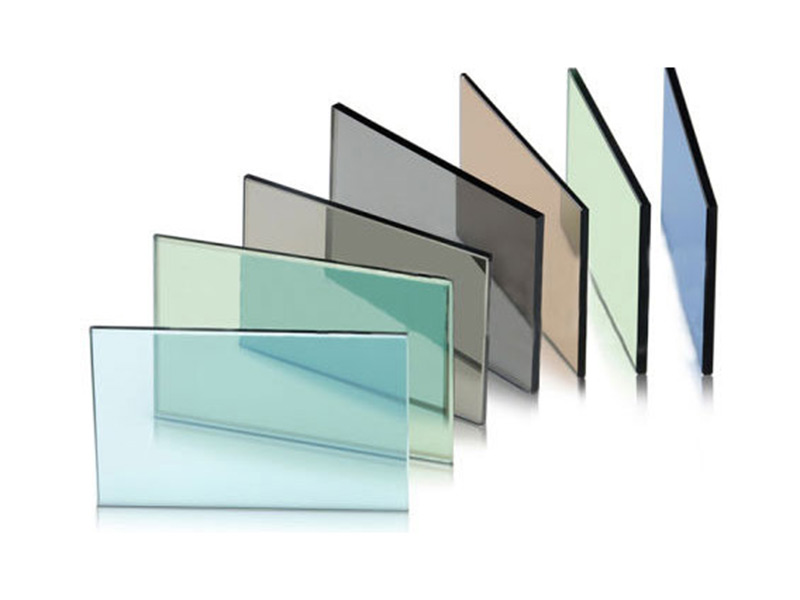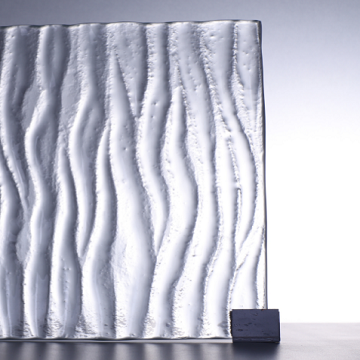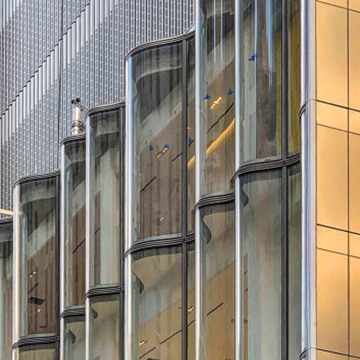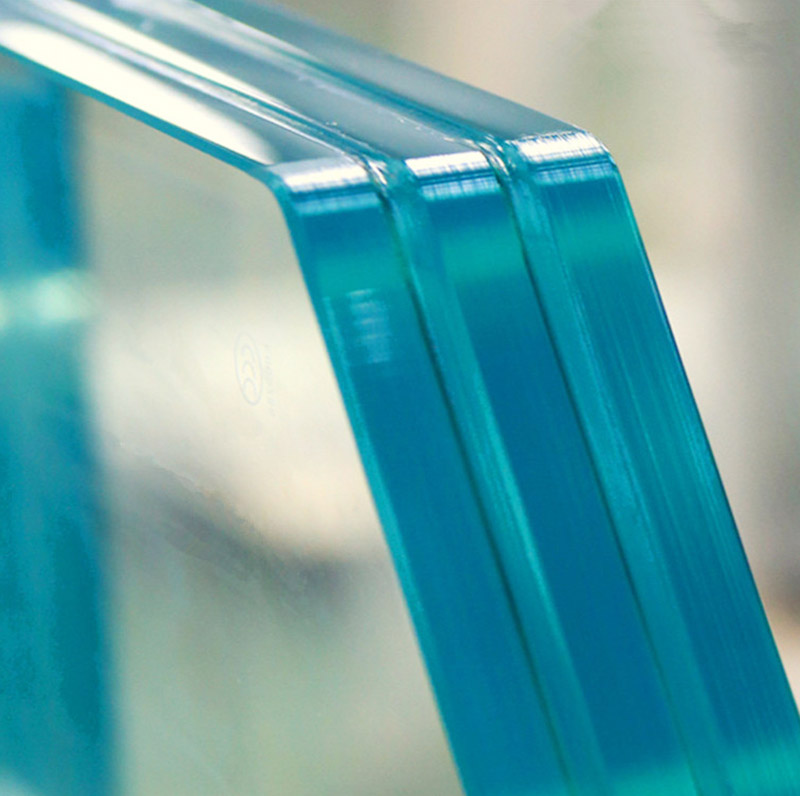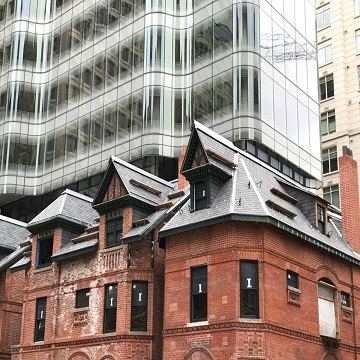Laminated glass provides higher mechanical resistance and security benefits.
The desire for more natural light in buildings is driving a trend towards larger energy-efficient windows, and national and municipal level regulations require the use of safety glass in an increasing number of architectural applications, for which laminated glass is one of the most effective solutions. A greater demand for noise reduction in both residential and commercial builds, gives rise to increased use of acoustic laminated glass.
What is laminated glass and how is it made?
Laminated glass is two or more lites of glass permanently bonded together with one or more polymer interlayers using heat and pressure. The glass and interlayers are available in a variety of colors and thicknesses which provide the desired appearance and performance to meet the relevant building code standards and customer requirements.
While float glass provides an excellent base product, laminating the glass can add other properties and benefits such as safety and security, sound control, UV protection, and color. Laminated glass products make float glass suitable for today’s demanding architectural applications such as: noise reduction, hurricane impact-resistance, blast mitigation, forced entry, protection from broken glass – or a combination of these.
What are the benefits of laminated glass?
Laminated glazing can be adapted to suit many architectural projects, particularly those that require demanding performance in terms of increased safety, security (impact resistant glass), UV protection, noise reduction or a combination of these – while strongly considering the aesthetics, architects desire.
Safety and reduced risk of injury
Glass is often laminated to protect people from glass breakage. Laminated safety glass can be used in many different ways to provide increased safety and security.
Under sufficient impact force, laminated glass will break.glass fragments tend to adhere to the plastic interlayer and remain largely intact, reducing the risk of injury. This is particularly important when there is a risk of broken glass falling from high-rise buildings, or from overhead applications such as roof glazing, canopies and skylights. In hurricane-resistant applications, the glass can help prevent water and air from entering the building.
Laminated glass is considered as “safety glass” when it meets the requirements of the various code organizations that set standards for safety.
Control of noise pollution
Acoustic insulating glass adds noise reduction to other benefits of laminated safety glass, helping to reduce noise levels so that people can be more comfortable in their living and work spaces.
The acoustic performance of glazing is expressed using two terms: Sound Transmission Class (STC) for measuring the sound transmission loss of interior walls, ceilings and floors; and Outdoor-Indoor Transmission Class (OITC) for measuring the sound transmission loss of exterior glazing applications. High sound transmission loss (i.e. good sound insulation) is often desired in many curtain-wall applications. Laminated glass tends to produce higher OITC ratings because the PVB laminate dampens vibration and the air space limits sound transmission.
Solution for your security concerns
Heat strengthened and tempered glass can be incorporated into laminated glass units to further strengthen the impact resistance. This type of laminated glass is often specified for applications where anti-intrusion or forced-entry security are concerns, ballistic and blast mitigation, and hail protection.
UV protection properties
When architects require plenty of natural daylight to enter a building without damaging interior furnishings and fittings – laminated glass can absorb up to 99% of the damaging UV rays which can be responsible for up to 50% of fading This protection means that interior surfaces and furniture are likely to last longer.
Endless aesthetic options
Every glass project is unique and so the desired color, light transmission and privacy varies. Using laminated glass for a project doesn’t mean you have to sacrifice on its appearance. Laminated glass offers a wide range of colored PVB interlayer options, which can be combined or used separately, resulting in a choice of over 3,000 transparent, translucent or opaque color options.
What is laminated glass used for?
Laminated glass can be used for aesthetic reasons when you wish to add color to a façade while maintaining its transparency. However, it is primarily used for safety or structural reasons.
Laminated glass can be particularly beneficial when you need to reinforce protection from forced entry, blasts, bullet-resistance, as well as for floor-to-ceiling glazing that prevents people from falling outside. For structural reasons, it is specified for skylights, canopies, balustrades, point-supported facades, and walk-on-glass.
In some regions of the world such as the coastal areas of North America, hurricane-resistant laminated glass is critical for both commercial and residential projects. Monolithic laminated glass or an insulating glass unit (IGU) with inboard laminated glass is preferred for those applications where building occupants need protection from glass shards upon debris impacts. Outboard laminated glass can be chosen to support specific performance of framing systems and impact protection.
In urban areas, laminated glass may be specified for projects where the surrounding areas are particularly noisy. In addition to exterior applications, laminated glass can also be used on interior glazing to reduce noise from one room to another.
Laminated glass can be coated with a high-performance coating to enhance both thermal insulation or solar control providing an almost endless variety of options to suit your performance requirements.
Learn more about designing custom decorative glass to bring a stylistic flair, creative accents, and privacy into your home or business! Call today and speak to Wallkingdonglass for pricing or for more information on our custom decorative glass windows, doors, and other features. Request your free estimate and a free on-site consultation on our website.


